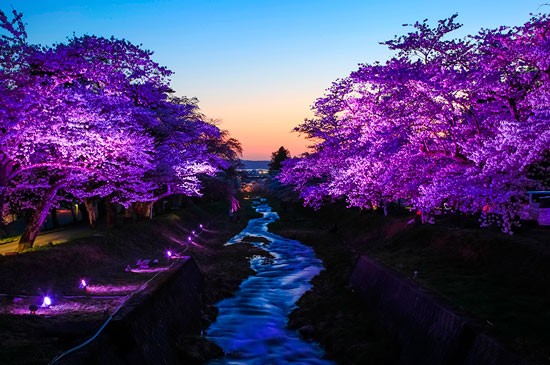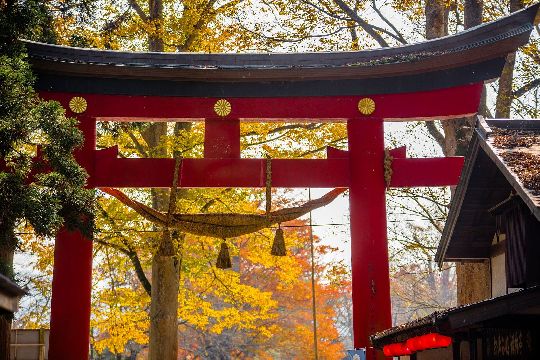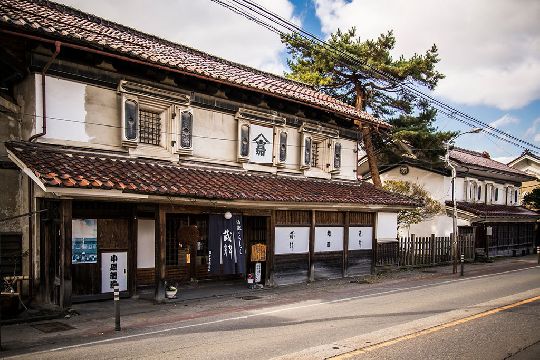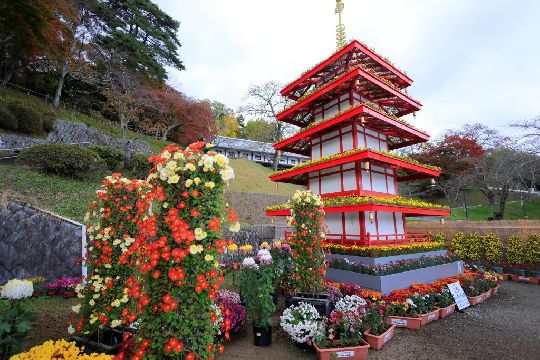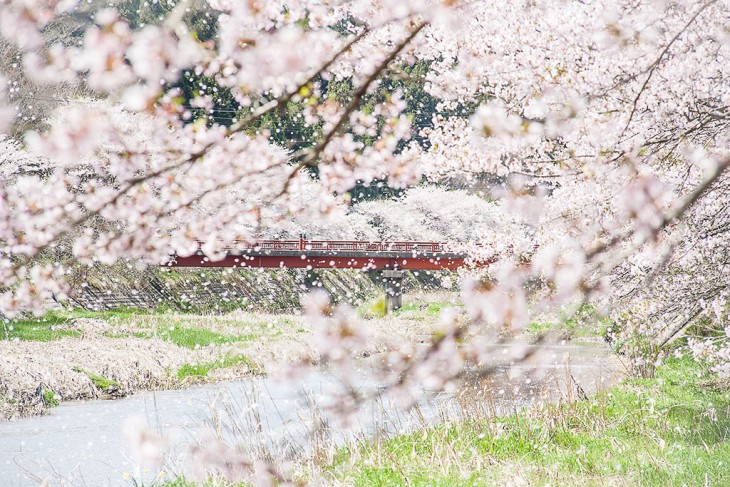
Fukushima Prefecture is blessed with lush nature and dramatic scenery. As the third-largest prefecture in Japan, the climate, seasons and landscapes differ vastly by area. However, there is one season that is spectacular no matter where you may be in Fukushima – spring! Blossoms start to bloom from the south-east of Fukushima, where the temperature is warmest, and flower the latest in the west. This means that if visitors come to Fukushima during April and May, it is very likely that cherry blossom will be in full bloom somewhere in the prefecture!
OGAWASUWA SHRINE
The beautiful weeping cherry blossom tree at Ogawasuwa Shrine has been standing strong in Iwaki City for over 500 years. The branches gracefully stretch across the main area of the shrine, providing a stunning foreground against the red torii gates. The blossom is illuminated by traditional Japanese campfires every night of the cherry blossom season.
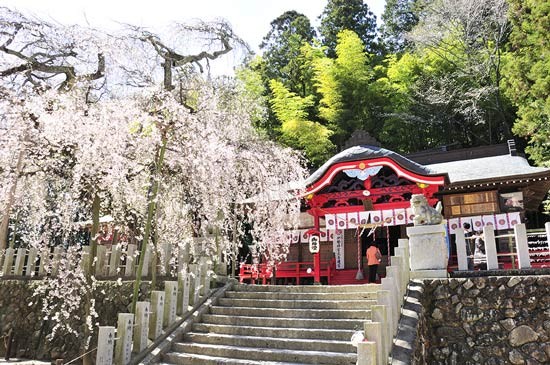
See here for information on visiting Ogawasuwa Shrine
NATSUI SENBON-ZAKURA
'Senbon-zakura' translates as '1000 cherry trees'. As its name suggests, this area is well known for the 1000 Yoshino cherry blossom trees that line both sides of the river. Natsuigawa River is a wonderful location for taking photos or going on a peaceful walk.
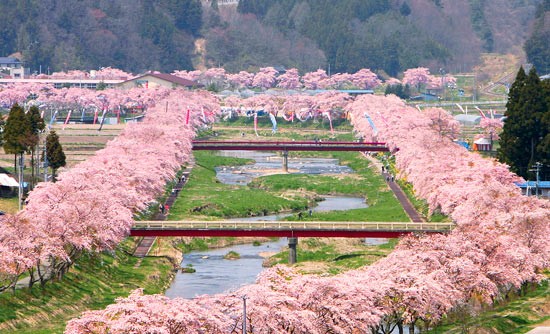
See here for information on visiting the Natsui Senbon-Zakura
HANAMIYAMA AREA
The Abe family opened their stunning garden to the public as a park in 1959 to allow visitors to enjoy their flowers. In the springtime, over ten types of blossom bloom together, enveloping the park in bright, beautiful colours. The white of the often snow-clad Azuma mountains contrasts sublimely with the flowers, giving visitors the impression of having accidentally wandered into paradise.
When I visited Abe-san, he spoke about how Hanamiyama Park can be enjoyed with all five senses – the sound of water from rock garden, the feel of the breeze on your skin, the sight and sweet smell of the flowers, and the taste of the fresh spring air. When I asked him where his favourite spot in the park was, he told me that he had too many to count, and it depended on the weather, the season and the time of day.
Visitors can enjoy finding their own favourite spot or ask for suggestions from the volunteer guides, who can guide visitors in English, Chinese and Korean.
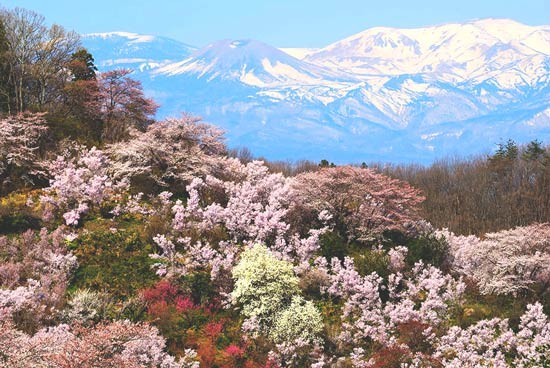
See here for information on visiting Hanamiyama.
MIHARU TAKIZAKURA
One of the three great weeping cherry trees in Japan, the Takizakura tree in Miharu is truly breathtaking. It is estimated to be around 1000 years old and has been designated as a national treasure. Around 12 metres high, the flowers of the cherry blossom cascade down for metres around the magnificent tree, enveloping visitors in bright flowers. It’s no wonder that its name translates into English as ‘Cherry Blossom Waterfall’.
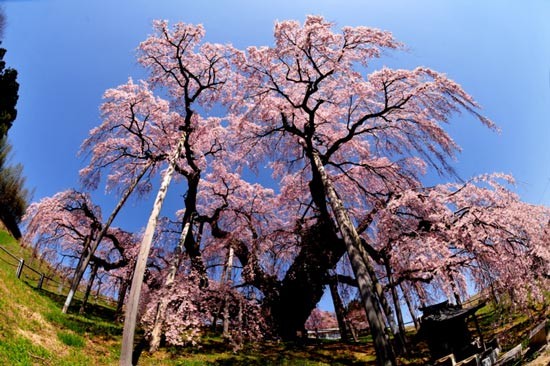
See here for information on visiting the Miharu Takizakura.
TSURUGAJO CASTLE
The light colours of the castle walls are complemented by around 1000 cherry blossom trees that decorate the castle and its surrounding park in the springtime. The blossoms can be appreciated from up close, or from above – a sight you can gain access to from the viewing platforms at the top of Tsurugajo Castle. Relax at the traditional Japanese tea house inside the castle walls, or take a walk through the picturesque park before entering the castle and learning about Aizu-Wakamatsu City’s rich and interesting samurai history. Free English guided tours are available at the castle if booked 2 weeks in advance through the Aizu-Wakamatsu City International Association (Website here). You can also rent bicycles at the castle.
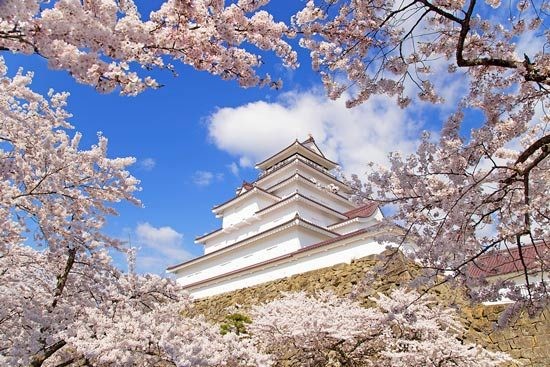
See here for information on visiting Tsurugajo Castle.
NICCHU LINE
Nicchu Line is the name of the train line that used to run at this site. The train tracks have been closed and converted into 3 km long cycling paths, but you can still see the steam train which used to run on this line. 1000 weeping cherry trees stand tall along the Nicchu Line, their branches stretching as far down as the feet of visitors that pass by. There are 'cherry blossom walks' held along the Nicchu Line in late April.
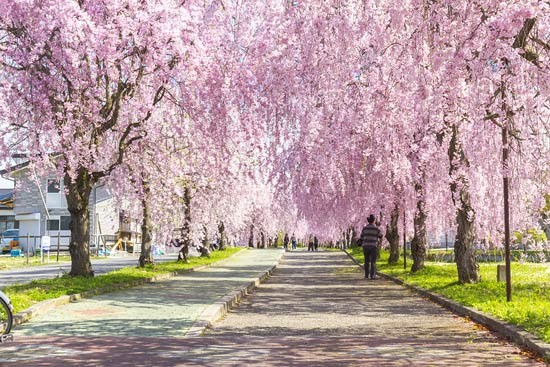
See here for information on visiting the Nicchu Line.
KANNONJI-GAWA RIVER
During springtime, a 1 km path along the banks of the Kannonji-gawa river becomes lined with Yoshino and weeping cherry tree blossom. Visitors walking along the river banks may feel like they are passing through a tunnel of blossom. On a bright and sunny day, a visit to Kannonji-gawa River is a must. That being said, it is worth it to hang around until the evening, when the branches and flowers are lit up with the setting sun, and later with stunning light displays.
